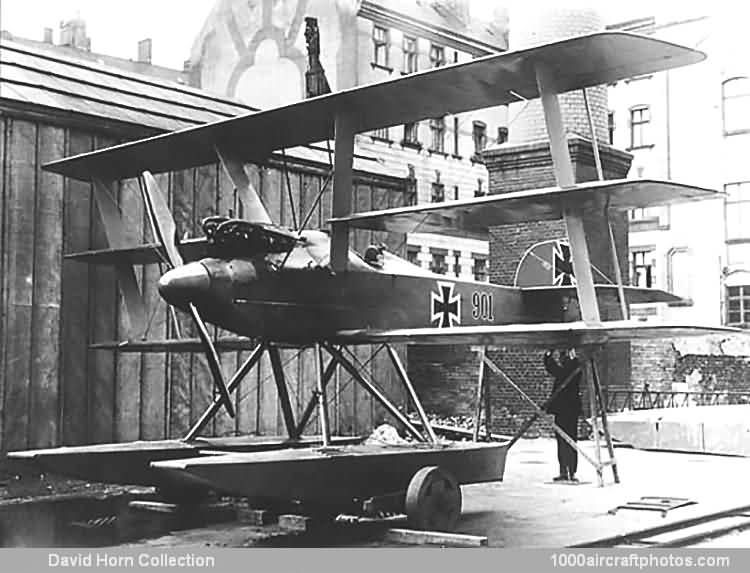03/31/2015. Remarks by Johan Visschedijk: "Soon after forming Sablatnig Flugzeugbau G.m.b.H. in October 1915, Dr. Josef Sablatnig participated in a design competition for a floatplane fighter, receiving an order for two machines, serialed 900 and 901.
No. 900 was a single-bay biplane, generally similar to the SF 2, and to improve the stability of the parasol wing, small fabric covered V-section struts were mounted on the upper wing, serving as kingposts for bracing wires. Interplane struts, also fabric covered, were of X-form. The power plant was an 150 hp Benz engine and small rectangular radiators were mounted on either side of the fuselage, just aft of the engine. The SF 4 had a vast amount of wire bracing provided to give stability to the wings, especially to the upper wing, and it is not surprising that performance suffered considerably on account of the resulting drag.
The SF 4 was armed with a single fixed machine gun, firing forward through the propeller arc; fairings were fitted to the fuselage in front of and behind the cockpit, and the impression is that the pilot's visibility must have been rather poor. In this form the SF 4 went to the SVK (Seeflugzeug Versuchs Kommando, Seaplane Testing Command) for inspection and flight testing. Its maximum speed was satisfactory for a floatplane, but its rate of climb was inferior to that of all other competitors. More serious, its maneuverability was poor as a result of the large span of the upper wing, and despite the many bracing wires the instability of the wings when banking or diving made it unacceptable. Even in a shallow dive there was excessive wing vibration.
Meanwhile, construction of the second SF 4 was underway. Sablatnig had decided to produce this machine in triplane form to improve the rate of climb. Like the Fokker triplane this version had I-form interplane struts and ailerons were fitted to all three wings, being interconnected by a single strut on either wing; attachment of the wings to the fuselage was also by means of I-struts. This machine, No. 901, had armament of only one machine gun.
The photo above shows the works court yard in the Koepenickerstrasse in Berlin, and it seems rather strange that the construction of 164 of the 56 aeroplanes and 165 seaplanes built by Sablatnig were constructed almost in the center of this great city, precluding any possibility of local flight testing. The Berlin factory also took an sub-contract work for Friedrichshafen. Sablatnig had only a small dockyard at the Müggelsee for initial flotation tests, but additional premises were acquired at Warnemünde. Despite the knowledge and experience gained by Dr. Sablatnig, both of these aircraft failed to meet requirements and were rejected."
